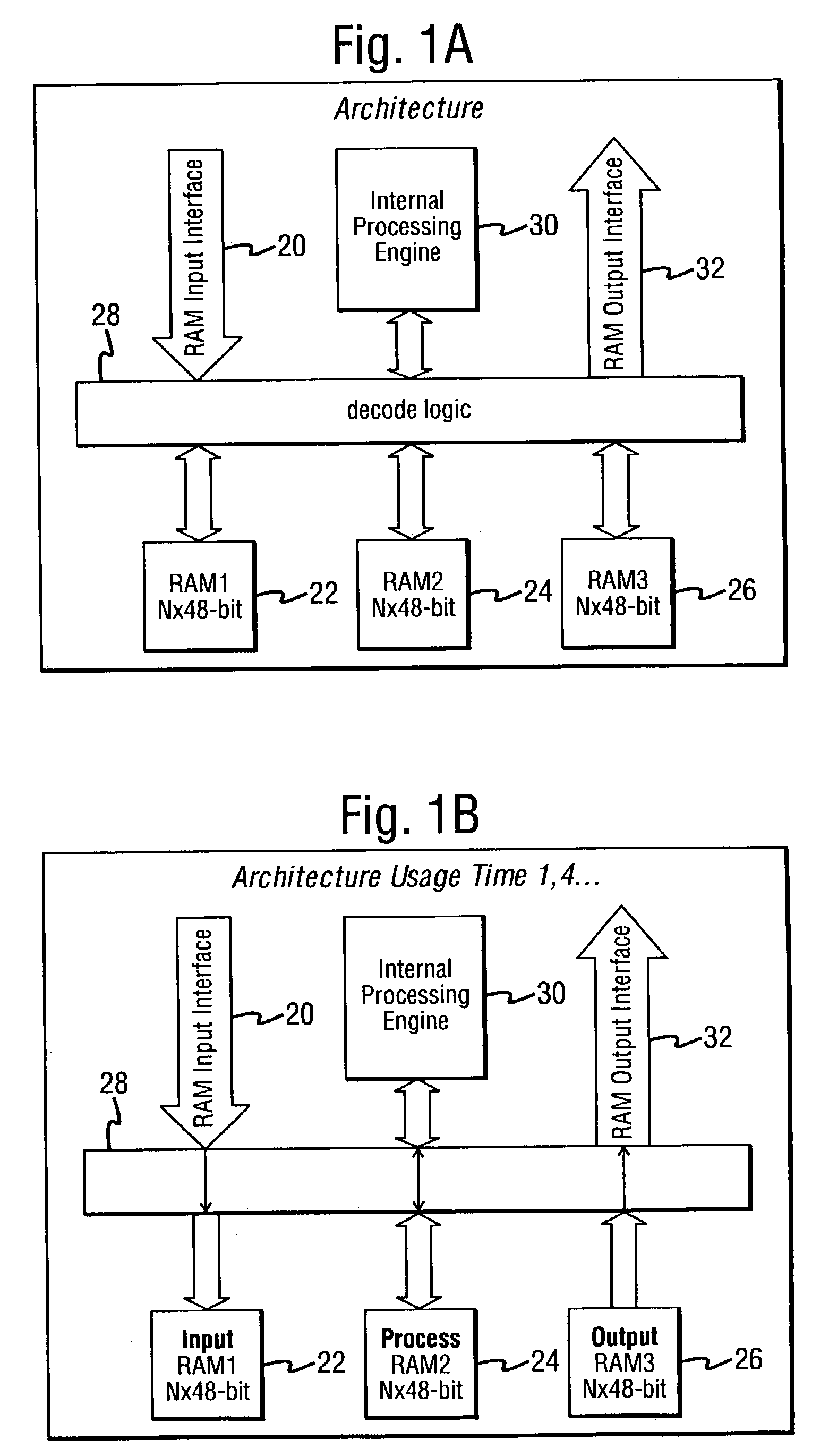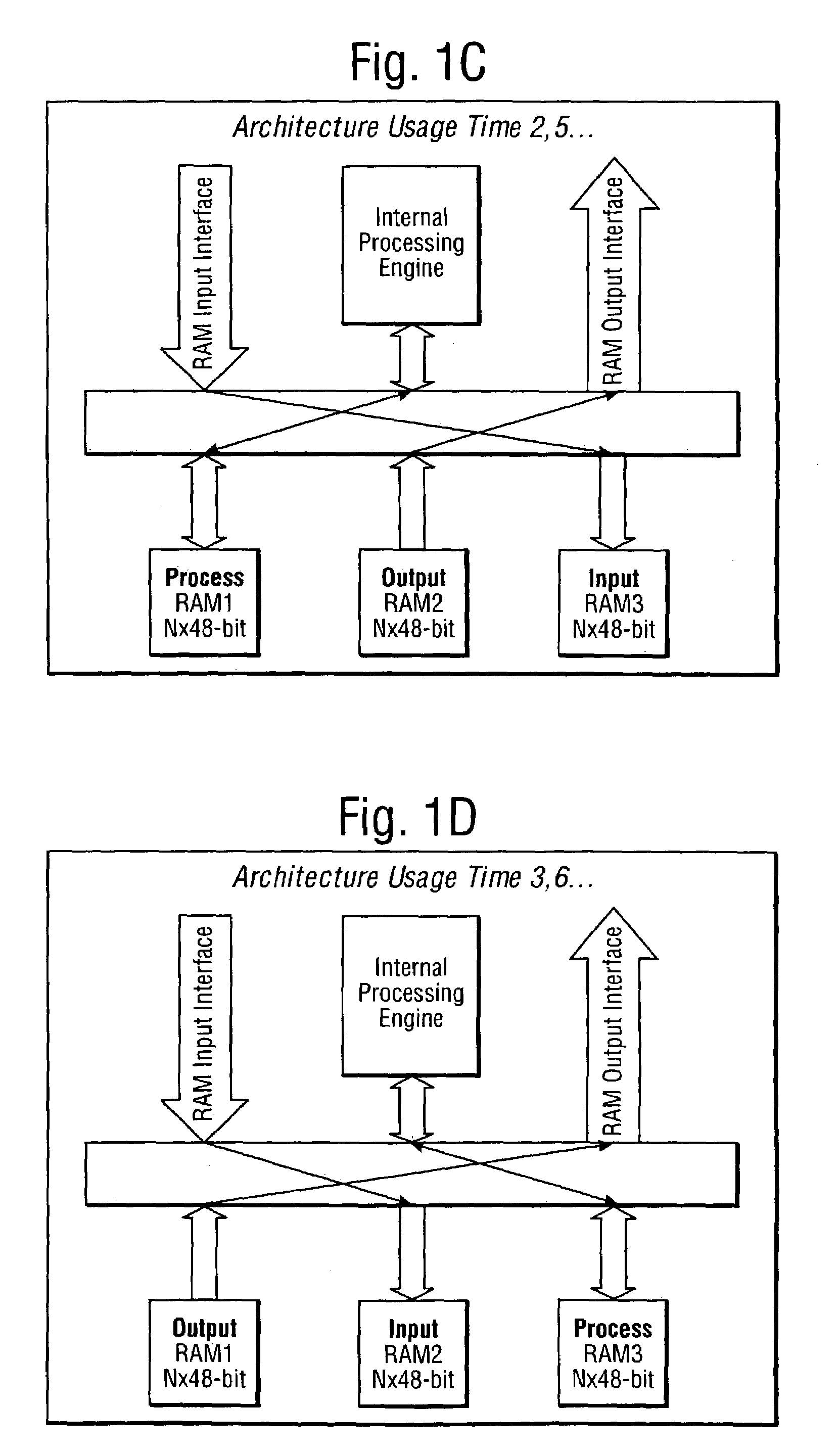Method and system for performing a fast-Fourier transform
a processing system and fast-fourier technology, applied in the field of fast-fourier transformation and processing system, can solve the problems of poor performance, less memory used, and much lower performan
- Summary
- Abstract
- Description
- Claims
- Application Information
AI Technical Summary
Benefits of technology
Problems solved by technology
Method used
Image
Examples
Embodiment Construction
[0044]In accordance with a preferred embodiment of the invention, an N-point 16-bit FFT is performed at the same speed as in the first prior art embodiment described above with reference to FIGS. 1A to 1F, but with reduced RAM usage. Referring to FIGS. 3A to 3E, as in the prior art systems, the architecture of the preferred embodiment of the invention has a RAM input interface 20 from which data is passed to three RAMs 50, 52 and 54 according to the FFT operation being performed, via decode logic 28. When the input RAM is ready for processing, as in the first prior art system, no data movement is employed. Instead, the RAMs are essentially rotated insofar as their functions are rotated. The input RAM becomes the processing RAM, the processing RAM becomes the output RAM, and the output RAM becomes the input RAM, as is evident from FIGS. 3B to 3F. This rotation is essentially achieved by manipulating the MSBs of the addresses used to access the RAMs 50, 52 and 54. As before, there is ...
PUM
 Login to View More
Login to View More Abstract
Description
Claims
Application Information
 Login to View More
Login to View More - R&D
- Intellectual Property
- Life Sciences
- Materials
- Tech Scout
- Unparalleled Data Quality
- Higher Quality Content
- 60% Fewer Hallucinations
Browse by: Latest US Patents, China's latest patents, Technical Efficacy Thesaurus, Application Domain, Technology Topic, Popular Technical Reports.
© 2025 PatSnap. All rights reserved.Legal|Privacy policy|Modern Slavery Act Transparency Statement|Sitemap|About US| Contact US: help@patsnap.com



